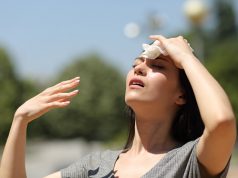
Teach Kids To Safeguard Against Infections & Colds
School is back in session, and that always brings with it the chance of spreading infections and bringing bugs home. Children are particularly susceptible to illnesses for several reasons. They have not been exposed to many common germs, their immune systems are still developing, and they are unaware of proper hygiene habits.
Germs can spread from one child to another in several ways:
- Direct contact when a sick child touches another child.
- Indirect contact when a sick child touches an object such as a toy or surface (e.g., a table or chair.) The germs spread to that object or surface and can survive for several hours to several weeks. The germ can transfer to anyone who touches that object or surface.
- Droplet transmission when a sick child coughs or sneezes. The germs in droplets of mucus or saliva can travel through the air to another child or surface.
- Consumption of contaminated food or water.
- Bites or scratches from infected insects or animals.
Here are some ways to help protect your child from germs and illness at school.
Hand Hygiene
Hand washing with soap and water is still the single most effective way to reduce the spread of illness. Teach children how and when to wash their hands.
5 steps to proper hand washing
- Wet hands with warm running water.
- Apply a small amount of liquid soap. Antibacterial soap is not required.
- Rub hands together for at least 15 seconds. Rub palms, backs of hands, between fingers and under nails; creating lather.
- Rinse off all soap with running water.
- Dry hands with a clean, disposable towel.
Children should always wash their hands:
- Before eating and drinking.
- After using the toilet
- After playing outside, handling pets or cages
- After sneezing or coughing into hands
- Whenever hands are visibly dirty
Hand sanitizer
Alcohol-based hand rubs are not recommended for routine use. However, they are useful when running water isn’t available. Be sure to choose a product that is alcohol-based to kill germs. To be effective, a sanitizer should contain at least 60% alcohol that’s why it can be harmful if swallowed by children. Hence, children under age six should not use it without supervision.
Teach your child germ etiquette
Teach your child to stay away from sick children as much as possible. Also, your child should cover their mouth when coughing or sneezing to prevent spreading infection. Advise your child to sneeze into a tissue, throw it in the trash right after, and then to directly wash their hands. If this is not possible, he should cough or sneeze into the crook of his elbow (the area where the elbow bends) and not his hands.
Keep your contagious child home
You can help prevent the spread of infectious diseases by keeping your contagious child home until he can no longer spread his illness to others. A child with a fever should be kept at home until they have been symptom-free for at least 24-hours, the same practice applies for diarrhea and vomiting. A child with a rash should be seen by a pediatrician to assess if the rash is infectious and can spread to other children. For some infections, a child is contagious a day or more before he has symptoms. That is another reason why it is important to wash hands frequently. You never know when your child or another child is passing a virus or bacteria.
Get immunized
Make sure your child is up to date on scheduled immunizations and that everyone in the family older than 6 months of age has got a seasonal flu vaccine.
Build immunity
Help protect your child from inside as well as out. Make sure that she gets enough sleep and exercise, avoids stress, and eats a well-balanced diet. Pack healthy lunches and snacks. Encourage them to drink water at school to help keep their immune system strong.
Tel: 16724










